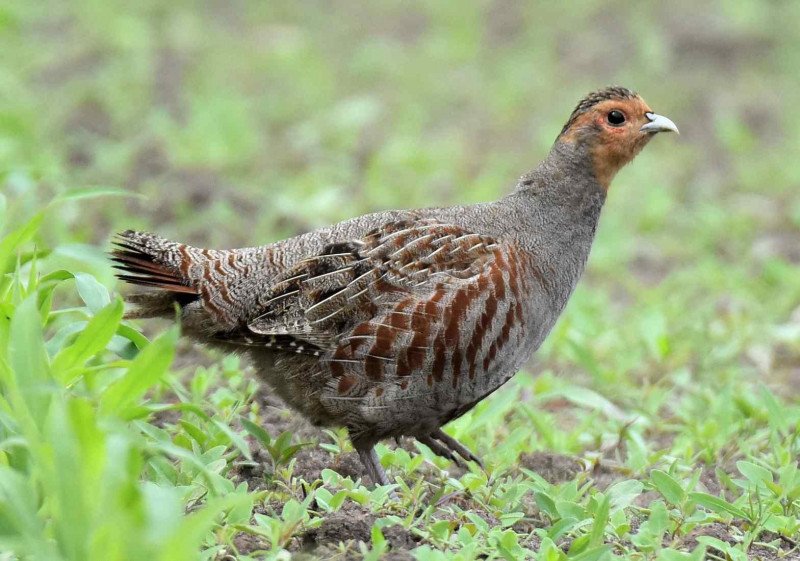Partridge

Partridge
NL: Patrijs
D: Rebhuhn
FI: Peltopyy
Latin name: Perdix perdix
Bird group: Phasianidae
The partridge or field grouse is a field bird in the pheasant family (Phasianidae). The species occurs in large parts of the European continent and western Asia.
Characteristics: An adult partridge is 28 to 32 centimeters long and is compact with a round body. At first glance, the males and females look alike; yet there is sexual dimorphism. The males have a dark brown belly spot in the shape of a horseshoe, while in females this spot is a lot smaller and grayer or completely missing. Both sexes have an orange colored throat, cheeks and eyebrow stripe. The crown, nape, breast and flanks are light gray. The flanks are also provided with several rusty brown bands. In addition, the partridge has brown wings and a white belly and undertail coverts. Juvenile birds do not have a breast patch and resemble a quail (Coturnix coturnix) or young pheasant (Phasianus colchicus) but are larger and more compact. The young birds are yellow-brown to gray-brown, without orange parts around the head or breast spot. After two to three and a half months, the young partridge will moult to an adult plumage. Partridges can often be seen in small groups.
Food: The food consists of seeds, weeds, grains, leaves of grasses and clover and insects.
Distribution: The European population was estimated at 1.38-2.67 million breeding pairs in 2015 by Birdlife International. The distribution area of the partridge extends over large parts of the European continent and extends from Ireland to the Ural Mountains, with the exception of northern Fennoscandinavia, Iceland and northern Russia. In addition, the species is also present in parts of Western Siberia, Kazakhstan and Transcaucasia and has been introduced to North America. The partridge is mainly a resident bird, but in Eastern Europe the species is partially migratory.
Song/call:

